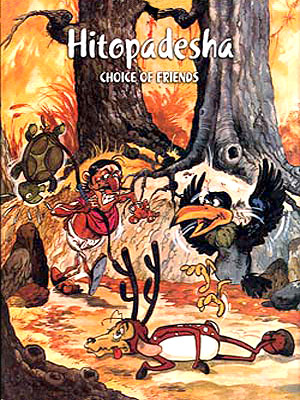 Hitopadesha is believed to be an independent treatment of the famous fable of Panchatantra. It basically deals with statecraft. This was composed by Narayana. It is believed that this tale was written in Bengal. Hitopadesha consists of around thirty short stories. His sources are stated to be the Panchatantra and an anonymous book. Political interest of the Panchatantra is maintained though Narayana adds his own content also to it. He also brings together large selections from the Kamandaka Nitisara.
Hitopadesha is believed to be an independent treatment of the famous fable of Panchatantra. It basically deals with statecraft. This was composed by Narayana. It is believed that this tale was written in Bengal. Hitopadesha consists of around thirty short stories. His sources are stated to be the Panchatantra and an anonymous book. Political interest of the Panchatantra is maintained though Narayana adds his own content also to it. He also brings together large selections from the Kamandaka Nitisara.
Narayana says that his main purpose of creating Hitopadesha is to instruct young minds so that they learn the philosophy of life and are able to grow into dependable adults. It is produced in a format that can be understood easily by a young prince. From Panchatantra Narayana derived the inversion of Book i and ii. This was done in order to start the work with the winning of friends and thereby advancing to their loss. However Books iii and iv were his own creation. Book iv was composed by inventing a new frame story thereby placing in it part of the stories of the original Book iii.
Narayana`s style is simple and easy. A substantial number of the stanzas are his creation. He also deserves credit for fluent versification. The massing of verses is an error. Language is more monotonous by the devotion to passive constructions and the avoidance of verbal forms or unusual syntactical constructions. Nominal use of the gerundive is a sign of a decline in feeling for grammar. The maxims are happily framed.
This article is a stub. You can enrich by adding more information to it. Send your Write Up to content@indianetzone.com












